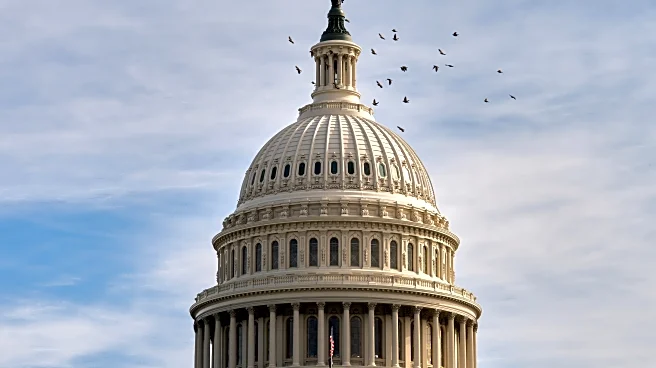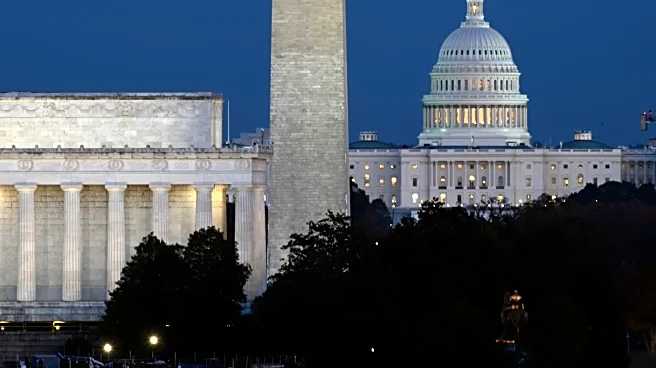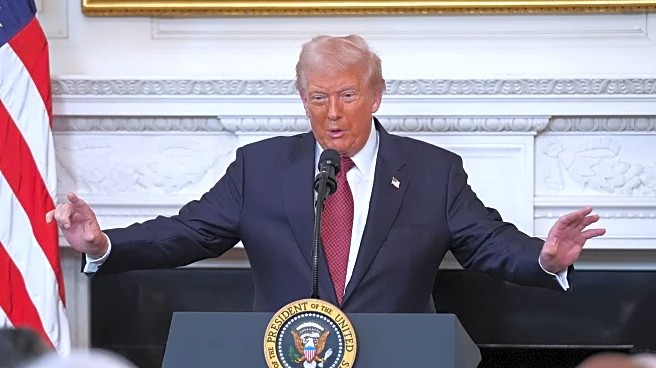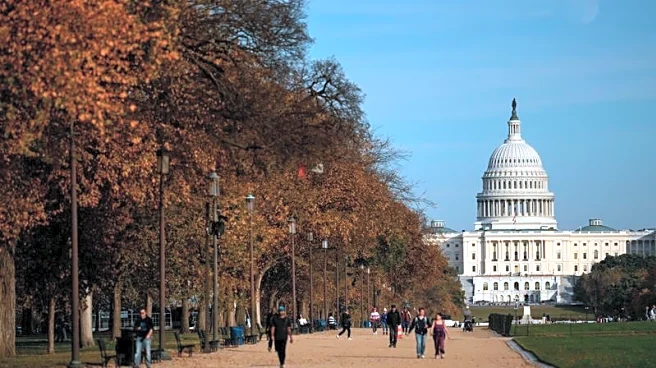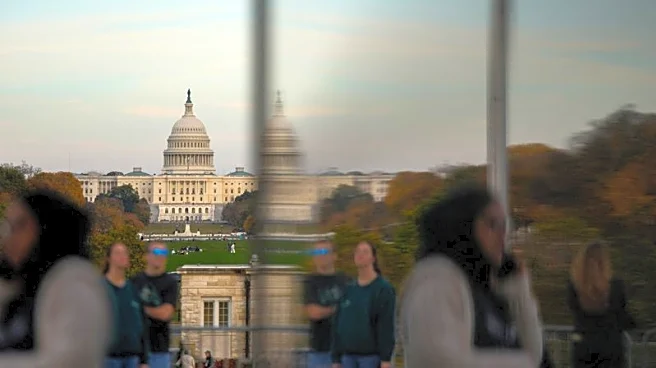What's Happening?
The U.S. government shutdown has reached its 36th day, marking it as the longest in the nation's history. The shutdown began on October 1, 2025, after Congress failed to pass a spending bill. This surpasses
the previous record set during the first Trump administration from December 2018 to January 2019. The current impasse is primarily due to disagreements over funding negotiations, with Democrats refusing to support a bill that does not extend Affordable Care Act subsidies. As a result, over 1 million federal workers are working without pay, and approximately 600,000 have been furloughed. The shutdown has led to significant disruptions, including delays in air travel, closure of national parks and Smithsonian museums, and potential loss of access to the Head Start program for low-income families. Additionally, the Supplemental Nutrition Assistance Program (SNAP) payments have been halted, causing public outcry.
Why It's Important?
The prolonged government shutdown has far-reaching implications for the U.S. economy and society. The lack of a functioning government affects federal employees, who face financial uncertainty without paychecks. The disruption in services, such as air travel and national parks, impacts tourism and related industries. The halt in SNAP payments threatens food security for millions of Americans, particularly low-income families. The political stalemate highlights deep divisions in Congress, with both parties blaming each other for the impasse. The situation underscores the challenges in reaching bipartisan agreements on critical issues, such as healthcare subsidies, which have significant consequences for public policy and the well-being of citizens.
What's Next?
The resolution of the government shutdown remains uncertain as both parties continue to hold firm on their positions. President Trump has urged Senate Republicans to end the filibuster to bypass Democratic opposition, but this plea has been rejected. The Senate has attempted multiple times to pass a stopgap funding bill, but these efforts have failed. The House has been out of session since the shutdown began, further complicating the path to a resolution. As the shutdown continues, pressure mounts on lawmakers to find a compromise that addresses the funding issues and extends healthcare subsidies. The ongoing situation may lead to increased public dissatisfaction and calls for accountability from elected officials.





